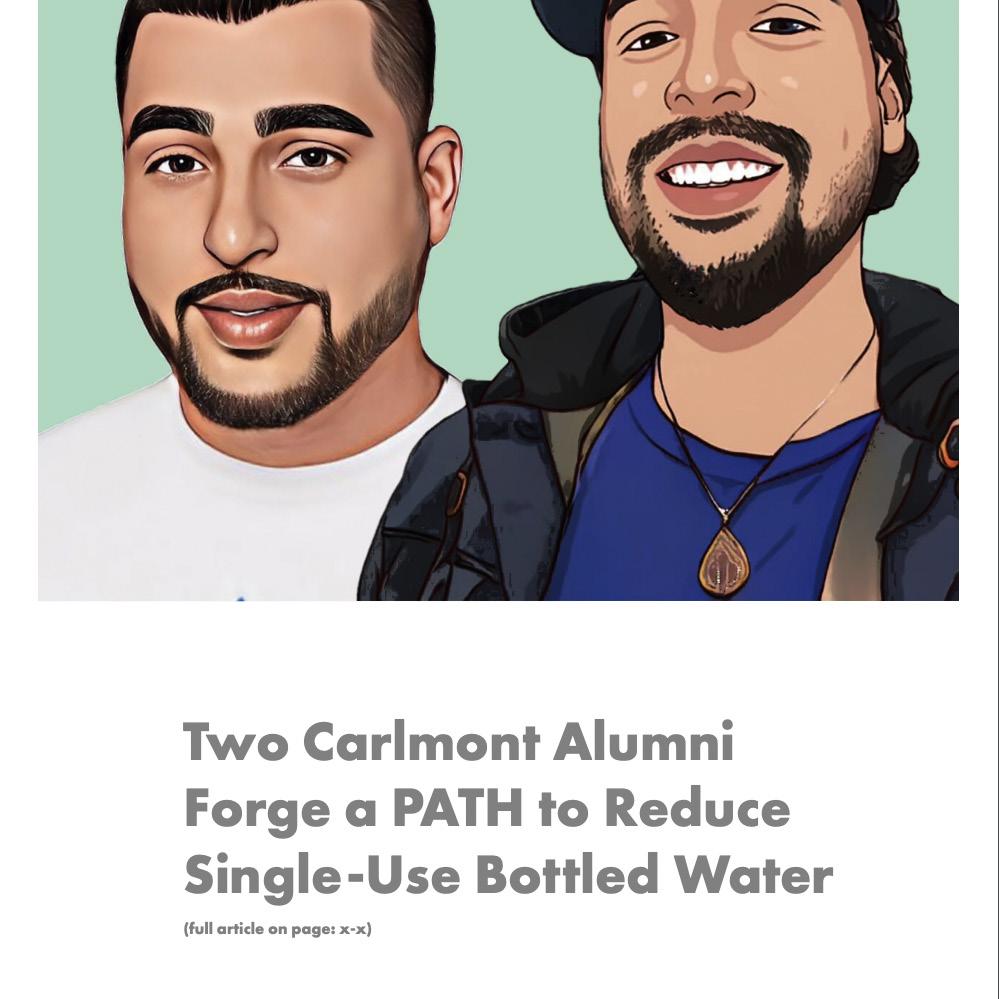H IGHLANDER THE





Carlmont Journalism is a nationally renowned media arts program run by the students of Carlmont High School. Our staff works to deliver the latest news to our student body, their families, and the community. News, within our school and beyond, is important to us, so we are committed to providing timely information, current events, and thought-provoking ideas to our audiences through storytelling, design, video, photography, and other emerging technologies.
Highlander Editor-in-Chief
Chesney Evert
Highlander Managing Editors
Lindsay Augustine & Grace Wu
Scot Scoop Editor-in-Chief
Hudson Fox
Scot Center Editor-in-Chief
Hayes Gaboury
Social Media Editor-in-Chief
Mandy Mah
Justin Raisner
Highlander Editors
Beck Von Tersch
Andrew Shu
Malina Wong
Sienna Reinders
Oliver Fichte
Alice Lan
Isa Khalak Staff
Adelaide Reinshagen
Aidan Lynd
Aimee Teyssier
Alexander Menchtchikov
Andrew Tolu
Annabel Chia
Anoushka Mekerira
Audrey Burnley
Austin Li
Avery Wong
Carolina Cuadros
Catherine Eikelbarner
Charlotte Gordon
Emma Yin
Erik Cheng
Evan Leong
Gabrielle Shore
Glydelle Espano
Gracia Shao-Xue
Inaaya Omer
Isabel Wright
Izaan Masud
Jasneh Sasan
Dear reader,
High school is tough. It’s hard to balance classes, extracurriculars, and the stress of upcoming adulthood. More than just preparing for college, however, high school is important because it helps those upcoming adults find their true identities: an endeavor that can be even more stressful than academics. Many teen movies have been made centering around cliques and popularity. Those teen movies start with a “nerdy” teen who tries to change themselves to fit in, only to realize that being themselves was what they wanted all along.
That being said, the message of “be yourself” has not pervaded modern culture yet. People continue to hide the parts of themselves that have been stigmatized by society, from building Legos in the basement to covert Dungeons & Dragons meetings on the weekends. But why hide the things we love? The “nerdy” facets of our personalities can pave the way for greater community connection.
With this in mind, we hope you enjoy the first issue of the 2022-2023 Highlander Newsmagazine.
Happy reading!
Lucy Sanders
Clementine Cunningham
Karla Lee
Kiana Hinkson
Linda Lin
Lucy Lopshire
Madelyn Mercado
Marrisa Chow
Maya Campbell
Myles Hu
Nyah Simpson
Piper Diehn
Quinn Rolland
Rintaro Sato
Robin Linares
Serenity Corbett-Richardson
Soleil Dam
Sophia Mattioli
Sophia Schreiber
Sophia Sunbury
Sophie Gurdus
Stella Pavao
Sydney Tao
Ujala Chauhan
Urvi Kulkarni
pg.




The ability to speak to people aids the engagement and content of online gaming, especially in first-person shooter games. However, many have voiced concerns about the safety of sharing information online, which tech companies have attempted to address.
"Voice chat (VC) is much more real-time than typed chat. It's also much harder to understand the context. For example, robots have a ton of features to detect if someone is using a real address for stuff on typed chat. So we can prevent people from asking someone for their address or phone number," said "Roblox" VC software engineer Plamen Dragozov.
However, Dragozov said this technology has limitations. Machine censorship of language can have difficulty detecting harassment, such as racial slurs and misogynistic language.
Aragon junior Oliver Pacquet encountered this language during a game with his friends.
"We were playing 'Rust' and before you die in that game, you get knocked down and have the chance to say stuff. We knocked down one kid who sounded pretty young, and he just started saying the n-word over and over and over again. It is really sad," Pacquet said.
According to Dragozov, the use of harmful language in a game environment varies with it's rating.
"'Roblox' is rated PG. We cover all the requirements to be considered safe for children. In order to stay in that rating group, you're expected to take the right measures to protect children
- like our real ID requirement to prove age above 13 for access," Dragozov said.
"Rust" has a rating of 17+ from the Entertainment Software Rating Board. Thus, they don't have systems like the real ID requirements in "Roblox," leaving underage users vulnerable.
"For 'Roblox,' if you mix in the fact that it's a gaming platform with random people, you now have strangers who could be adults with inappropriate ideas," Dragozov said. Age is only one factor predisposing players to harassment within violent online game VCs — gender is another.
A Pew Research Study found that 44% of internet users believe online gaming environments are more welcoming to men than women, 30% more than any other digital platform.

"I never talk on voice chat," said Carlmont senior Alex Lumish. "People always get upset that they have a girl on their team and make jokes about how bad I am even if I am doing fine or they say worse."

The extremes she experienced in gaming are the stories that insight fear and caution in Carlmont junior Madeline Martinez.
"Usually I try to just play with my friends to avoid that type of stuff. With my friends there, I'm not as scared to have someone yelling at me. If my friends are there, then they're always going to say something in a weird situation. Even if I just have their presence with me, it's okay. But
if they're not, then I would just feel unsafe," Martinez said.
The Pew Research study also found that large portions of online harassment are committed due to anonymity.
"Usually people use inappropriate language because they think they're anonymous on the internet," Dragozov said.
According to Pacquet, harassment present in online gaming is exacerbated by a lack of reporting.
"Some games are more responsive with the report feature. Usually, when I report people, they get banned or muted. The problem is that not many people report harassment," Pacquet said.
Although games can't make people report hate speech, it is currently the main tool used to regulate VC.
"In the moment, context is very hard for machines to understand with VC. Since context is super important for evaluating harassment, reporting is the fastest way to get offensive language to moderators to evaluate and keep games safe." Dragozov said.
Many players are now promoting the importance of reporting toxic language.
"The only thing people can do is call out bad behavior when they see it, which would make more people finally understand that saying that stuff isn't cool or funny, and hopefully stop saying it," Martinez said.
Christmas morning was among the most exciting mornings for many of us — the large Christmas tree illuminated by the protruding sunlight, and joy slowly filling the house.
Opening the gifts was arguably even better; ripping open the multicolored, puzzle-decorated wrapping paper to find a bright yellow box inside.
“Legos!”
The immediate shrill of excitement would ring through the house.
We opened the rest of the gifts; the yellow Lego box remained right by our sides. We eagerly waited for a chance to take out the colorful blocks inside.
We would build cities, bridges, people, and more. Hours would be spent
reveling in the feeling of constructing objects with our own hands.
However, as they’ve grown older, many feel that those things that brought us so much joy have become the basis of stereotypes.
“I used to love playing with Legos,” said junior Emily Hamanaka. “But now, people view playing with Legos as something only ‘nerds’ do. They forget that, at some point in their lives, they built Legos too. It’s a perfectly normal hobby.”
Despite Hamanaka’s view that Legos are commonly made fun of, they provide an activity that enhances the brain and captivates its audience, according to the National Library of Medicine
(NLM).
As NLM states, building Legos increases “spatial competencies that foster strong science, technology, engineering, and mathematics (STEM) skills.” It also enhances problemsolving skills, for example, when two blocks don’t fit together or something needs to be rebuilt in a


different way.
As such, the work required to assemble Legos builds one’s concentration span. According to the NLM, when one gets “lost” in the activity of building, their ability to focus develops.

According to Michael McNally, Lego’s North American director of brand relations, many adult fans hold conventions, organize group meetings, and buy and trade bricks online. They account for about 5% of total Lego sales.
“I build with Legos in my free time,” said Carlmont parent Felipe Salgado de Almeida Leme. “I love it. I have ADHD, so building Legos gives me something to focus on.”
According to the UK Children’s Wellness Centre, playing with Legos is an excellent pastime for those with attention deficit/hyperactivity disorder for various reasons, including creative prompting.
“Whenever there’s a Secret Santa at my workplace, I always ask for Legos,” Leme said. “In fact, just recently, there was a team bonding activity at my work where the whole group worked together to build the house from Up. Many adults, even professional engineers, build with Legos.”
However, because of the stereotype surrounding adults who play with Legos, his hobby does not go without judgment.
“Some people find it odd when they find out that I build Legos at the age of 50. But that doesn’t bother me,” Leme said. “But that doesn’t bother me.”
Still, it can be difficult not to succumb
to prejudices and biases, as Hamanaka knows well.
“I don’t think building Legos is anything to be ashamed of,” Hamanaka said. “Going home after a long school day and finding comfort in building amazing things with blocks is no different from going home and turning on a TV show. They’re both ways for people to relax. Why should people who play with Legos be stereotyped for their interests when people who do something like watch TV aren’t?”
The intention of breaking stereotypes is one of the reasons TikTok influencer Flynn Castles started his account.
Castles posts videos about things he’s passionate about, including his profound interest in Legos. I want people to know that no matter their age, having hobbies like building Legos is not something one should be ashamed of,” Castles said. “And you should be kind to everyone, no matter their interests.”

Castles aims to serve as a role model for many people insecure about their interests, including a handful of Carlmont students who build Legos and/or watch Castles’ videos.
“I first found Castles’s account after one of his videos popped up on my TikTok ‘For You Page’,” Hamanaka said. “I love seeing his videos about his LEGO sets, and it’s very validating to see an adult that isn’t ashamed of sharing his passion with such a large audience.”

Castles makes a variety of videos about Legos, one of which is him showing a collection of his favorite builds.
“I’m really into Star Wars,” Castles
said.
“My pride and joy is this Lego Millenium Falcon I built. I will love it more than any child I ever have; I’m just saying.”
Castles loves to spend time building Legos; it’s de-stressing for him. He wants to share videos of him doing things like that to show his audience that it’s perfectly normal to do so and feel the same way.
Hamanaka, among others, is grateful for his message.
“I wish society wasn’t so quick to judge people based on their interests and hobbies,” Hamanaka said. “But, unfortunately, that’s just the way it is. People like Flynn have helped me realize that it doesn’t matter what other people think of you as long as you’re content with yourself.”
Art by Urvi KulkarniMitchel Resnik at the MIT Media Lab seeks to enrich education through his philosophy of “projects, passion, peers, and play.” According to Resnik, “the ability to think and act creatively” will be the future of success. Many Bay Area teenagers typify this, as they go big with their passions.
Colleen Gu is an aspiring animator who is developing a short film; her project is something she holds close to her heart.
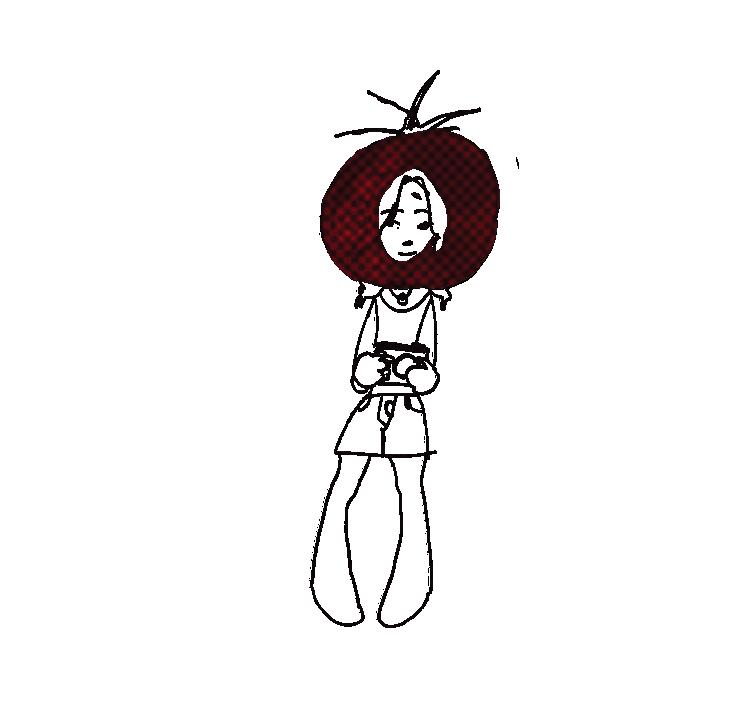
“The process of creating this film in and of itself gives me time to relish on everything I loved and seek to find in the future,” Gu said.
Gu cites her passion project as a major source of development, both artistically and introspectively.

"As I mindlessly draw frame-by-frame, I start to think about my relationship with things of my past... how I struggle to process things


I’ve felt and get in touch with my true emotions, though I haven’t found a conclusive atttude. I think that coming to terms with them will help me come to terms with myself,” Gu said.

She hopes to inspire young creatives to realize their passions.
“No matter what kind of thing you’re envisioning, you should just put it down on paper,” Gu said.
Avantika Swaminathan has devoted the past few years to developing a nonprofit chocolate business with their younger sister.
Swaminathan takes hours out of their day to perfect the sweet treats. The process is grueling, but the reward is much sweeter.
“We just wanted to provide some joy and share our unique and handmade flavors... just being able to share something I love with this community,” Swaminathan said.

The insight Swaminathan has gained from their passion project is the icing on top; their firsthand experience with business has aided them in many facets of their life.
“I plan to study vocal performance. I’m going to have to be able to market myself and knowing that I have gained those skills from marketing my products, that’s going to carry over,” Swaminathan said.
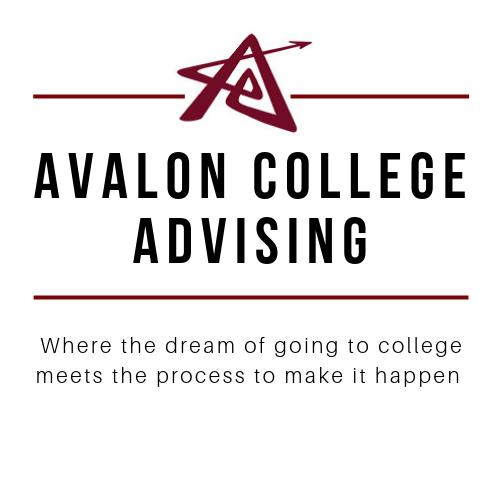


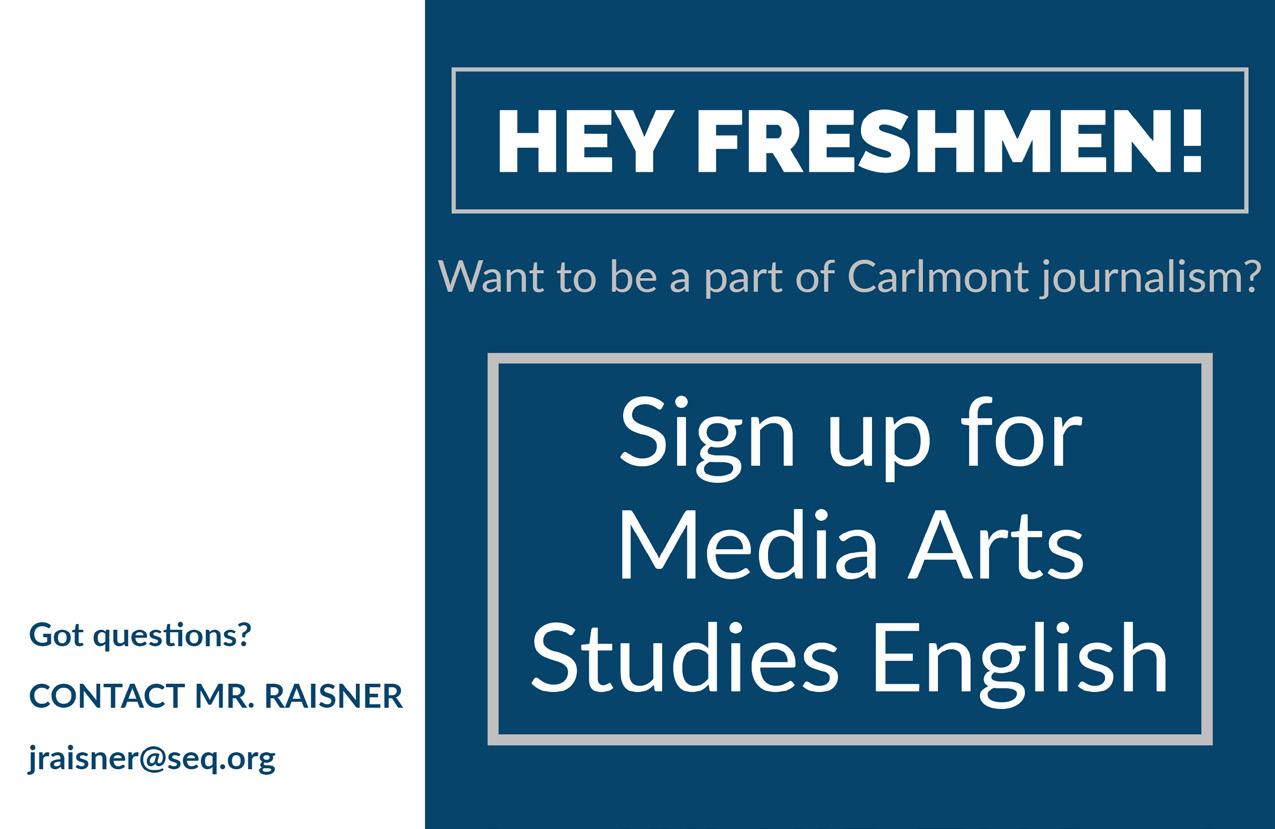

Dungeons & Dragons is everywhere in popular media. Mentions in series such as “Community,” “The Big Bang Theory,” and “Stranger Things” have elevated this pastime into one of the most widely-played tabletop role-playing games in the world.
Twenty years ago, television played an important role in spurring interest in Dungeons & Dragons. That's when Travis Callan, a current AVID, US History, and Life Skills/Ethnic Studies teacher, discovered Dungeons & Dragons as a sophomore at Carlmont.
“So, there was the final episode of Freaks and Geeks. They sit down, and they play a game of Dungeons & Dragons,” Callan said. “My buddy went out, and he bought the starter set. And he's like, ‘let's give it a try.’”
An on-and-off player since 2002, Callan recognizes how massively popular the game has become.
“I think it's way more accepted. It's definitely in the mainstream,” Callan said.
Statistics tell a similar story. As the world entered into lockdown in early 2020, the role-playing game flourished, notching its most successful year ever. With a 33% growth in sales, players adapted to
virtual tabletops and Zoom calls to play with friends, according to an infographic released by the developer of the game, Wizards of the Coast, LLC.
In a virtual environment, however, the game underwent fluctuations in player satisfaction. Recent Carlmont graduate Ana Hoffman Sole reflected on the shortcomings of the online version.
“Whereas in-person D&D tends to leave me excited or full of ideas, after Zoom D&D, I’d generally have a snack and take a nap,” Hoffman Sole said.

Jack Rizvi, a recent Carlmont graduate who has played Dungeons & Dragons since middle school, compared using a website to emulate in-person game tools to the virtual school experience.
“Think of the difference between Zoom classes and in-person classes, except you actually want to be there,” Rizvi said.
Despite these impediments, growth continued throughout the COVID-19 lockdown and into the following year. According to a Hasbro, Inc. February 2022 press release, 2021 represented the ninth year of consecutive revenue growth for the franchise.
Much like the “Freaks and Geeks” episode Callan and his classmates watched two decades ago, the success
can partly be attributed to the revival of Dungeons & Dragons imagery in television series such as “Stranger Things.”
The show’s global reach is no overstatement. Following the release of its fourth season, “Stranger Things”
joined “Ozark” and “Tiger King” as the third show to achieve over 5 billion streaming minutes in a week, according to Nielsen’s Streaming Content Ratings for the week of May 23 to May 29, 2022.
Even in years past, while teaching at Abbott Middle School, Callan noticed just how far the impact of “Stranger Things” reached.
“When I taught at the middle school, every time a season of Stranger Things came out, there was a big wave of ‘Mr. Callan, you know how to play the game, right? Let's play the game,’” Callan said.
Things are no different at Carlmont. The Dungeons & Dragons club was restarted this year, according to an analysis of Carlmont’s club registry.
However, even in the past, Dungeons & Dragons has been widely accepted by certain communities. Hoffman Sole noted that “being in an incredibly nerdy place like the Bay Area” may have something to do with it.
Twenty years ago, Callan did not see shaming as a problem.
“There was none of the stereotypical stigma. None of us got shoved into lockers,” Callan said.
Attributing the reason for the culture shift in part to “beginner friendly” releases of the game and “Stranger Things” portraying the game in a “positive and nostalgic limelight” Rizvi described the game culture as accepting.
“I have found (the culture around D&D) to actually be an incredibly positive and welcoming one,” Rizvi said.
Building off that narrative and emphasizing community, Callan drew attention to how open the Dungeons & Dragons community
was at Carlmont.
“Generally speaking, it's made up of everybody and anybody who's interested,” Callan said.
Within the larger community, demographics released by Wizards of the Coast, LLC. seem to reflect a shift towards more female players, now making up 40% of surveyed groups.
Rizvi agreed, noting that there was usually an “even split between the amount of men and women” involved in his Dungeons & Dragons groups.
As for the benefits of playing Dungeons & Dragons, Callan emphasized the flexibility and creative freedom that it provides.
“Dungeons & Dragons is very open, and you can pursue whatever you can think of as long as the Dungeon Master can think up rules for it,” Callan said.
Hoffman Sole agreed, adding that one can gain real-life experience and skills.
“You end up sitting around a table with a whole bunch of people trying to solve a problem pretty often in D&D,” Hoffman Sole said. “That’s something we’ll all continue doing for the rest of our lives.”
That structure comes from what Callan sees as the foundation of the game: teamwork.
“The person running the game is supposed to make sure that the people playing are having fun,” Callan said. “So it's cooperative. There are no opponents.”
In terms of media, Dungeons & Dragons fans still have more to look forward to. A stream of video games are being developed, and the theatrical release of “Dungeons & Dragons: Honor Among Thieves” starring Chris Pine, Michelle Rodriguez, Rene Jean-Page, Justice Smith, and Sophia
According to Rizvi and several gaming publications, a new version of the game, called One D&D, is to be released in 2024. Expanding on the introductory elements of Dungeons & Dragons to inspire a new generation, the journey the game has taken could serve as a blueprint for other roleplaying games.
“If you want to start playing, the next few years are the perfect time,” Rizvi said.
 Lillis will come to the big screen in 2023.
Lillis will come to the big screen in 2023.
Many students can recall walking into a classroom and being struck by a wall of chatter, hearing their peers discussing a long-awaited premiere of a popular show or movie before class. While exciting conversations sweep up many students, some are left in dangerous waters as they try to navigate away from any spoilers they may overhear.

Often, students engaging in these conversations take extra caution when around people who haven’t gotten the chance to see it for themselves to ensure that an accidental slip of the tongue wouldn’t ruin their experience.
“Your reaction is going to be much better when you don’t know what’s coming,” said senior Yajur Preetham. “If you spoil it, you’re ruining an amazing experience for somebody. I mean, nobody likes that.”
Whatever the students’ reactions to a popular show or movie may be, there is a good chance that many forms of media have connected students in a variety of areas, from online discourse to the classroom.
In many cases, these discussion-worthy media come from various mediums, from big blockbuster hits to shows exclusively on streaming platforms to movies that appeal to people’s nostalgia.
For instance, when looking at big blockbuster hits, many don’t need to look further than movies in the Marvel Cinematic Universe. According to Internet Movie Database (IMDb), four of the Top 10 highest-grossing movies of all time come from Marvel movies released in the last decade. Streaming services also play a significant role in shows achieving popularity.
According to Neilsen, an analytical data group focused on data from media and television shows,

views from streaming services have gained more popularity than broadcast television viewership. This data was found especially during May 2022, concurring with the initial release of “Stranger Things 4”.
Students echo the importance of shows on streaming services.
“I’d say many shows on Netflix are very popular like, for example, ‘Stranger Things’ or ‘Gilmore Girls,’” said Kate Dimon, freshman. “Shows like that are specifically aimed at teenage audiences.”
However, there are instances where the media can provide negative responses rather than positive ones among the student population.
For example, when “13 Reasons Why” premiered in 2017, with the premise centered around a high schooler’s suicide, there were many unfortunate effects.
According to a study published by the National Institute of Health, there was a 28.7% increase in teen suicide rates following the show’s release, causing the study to urge responsible portrayal of suicide in media.
As one student explained, the response to the show’s release varied within the classrooms, with some teachers checking in with students following the show’s release.
“Shows like ‘13 Reasons Why’ is something I know my teacher talked about a while back,” said Jahdai Hernandez, senior.
However, other educators, like Shelley Bustamante, Carlmont’s Mental Health Specialist, chose not to address the show when teaching students about mental health. She never watched the show since she felt it glamorized suicide, and she explained why shows with sensitive topics need to take more responsibility for what they are promoting.
“It has to be carefully done,” Bustamante said. “Kids are very impressionable and especially when they’re watching people they can
relate to and even look up to, like celebrities, actors, musicians, and things like that.”
Often, during times of darkness and tragedy, nostalgia in media helps bring positivity. According to the research study “Nostalgia: Past, Present, and Future,” published by the Association of Psychological Science, nostalgia can play an important role in connecting with others when people feel otherwise disconnected within their community.
For many students this summer, “Minions: Rise of Gru” was a way they could stay connected when school wasn’t in session. Many contributed to the trend by suiting up in formal attire or minion costumes to view the movie in theaters.
“If everyone's wearing a tuxedo and going see the minion movies, you want to be a part of it,” said senior Konstantin Pejakovic.
Emi Pajarillo, freshman, explained how the appeal to her inner child fueled her enjoyment of the movie.
“It definitely turned into this trend, and that’s why people (wanted) to do that,” Pajarillo said. “Also, the genuine interest part. It’s like, ‘Oh, I watched this when I was younger, and now there’s another one.’ So there’s still that interest there.”

Bustamante noted that media can greatly influence its impact on students in and outside the classroom.
“I think media is very powerful when it’s made with the intent to educate and contribute to making the world a better place, not being reckless with the ways they express the topic,” Bustamante said.
Tiger moms. A term first introduced to describe their heavy handed parenting and deep involvement in every aspect of their child’s life, the name has revitalized parenting.
While there are other involved parenting styles, tiger parents set extremely high goals for their children and push them relentlessly to achieve, according to educator and author Jenny Grant Rankin, Phd.
It’s hard to argue its efficacy. In a study from University of Texas at Austin, associate professor Su Yeong Kim found that “students with tiger parents show a paradoxical pattern of both higher distress coupled with high achievement.”
In the case of those like Amy Chua, a self-proclaimed tiger mom and former tiger kid, tiger parenting produces results.
“I like my life; I feel I have lots of opportunities. And my parents actually having had such high expectations for me — I would say it’s the greatest gift that anyone has ever given me,” Chua said in her book, “Battle Hymn of the Tiger Mother” which first introduced the term. “I complained a lot when I was little, but that’s how I feel now.”
According to “Social Forces,” a social research journal, “parents of different social classes express remarkably similar support for intensive mothering and fathering across a range of situations.”
Student success is largely determined by parental income specifically. According to a Georgetown University paper, “The College Payoff,” advantageous parents can increase their children’s lifetime income by $1 million.
Parents want the best for their kids, but for the kids on the receiving end, this pressure can miss the mark.
“Every day when I get home from school, I’m asked, ‘Any big tests today?’ ‘You still got an ‘A’ though, right?’” said Adam Olsen*, a student with tiger parents who wishes to remain anonymous. “Though I know I’m supported, and they’re mainly just expressing concern, I also know that I’m simply expected to achieve certain things.”
Other students’ parents operate differently and their academic motivation stems primarily from themselves.
“I study. I work hard. I feel like it’s a struggle that I have to figure out on my own,” said Naomi Prince, a senior with hands-off parents. “I think that with parents that are super strict, kids feel more pressure from their parents than they do from themselves.”
While this is up for debate, it’s no secret that the Bay Area is notorious for housing academically inclined students. Take Carlmont. Whether students have tiger parents or not, it’s difficult to measure to what extent child success is dependent on parenting style.
It’s impossible to pick one most effective parenting technique. It depends on the end goal, on each individual’s definition of success. One’s values, upbringing, and expectations all play into it.
“We all want to do the right thing for our children,” Chua said. “We all don’t know what that is, and we all won’t know until the future.”
* This name has been changed to protect the anonymity of the source, in accordance with Carlmont Media’s anonymous sourcing policy.
Supportive parenting lies a heavy emphasis on independence. Parents allow their children to learn their lessons themselves, and standby to help and support.
28%
Tiger parenting is a strict form of parenting. Parents are invested in their children’s success and push them to achieve their goals. This comes out in academics especially.
20%
Easygoing parents are handsoff. They let their kids roam and make their own decisions. Their kids learn lessons through their own experiences.
7%
Harsh parents are similar to tiger parents, but without the same goal-oriented focus. Rather, they lean on punishment and discipline.
SOURCES: https://www.apa.org/monitor/2013/09/tiger-parenting https://www.pewresearch.org/social-trends/2015/12/17/ parenting-in-america/

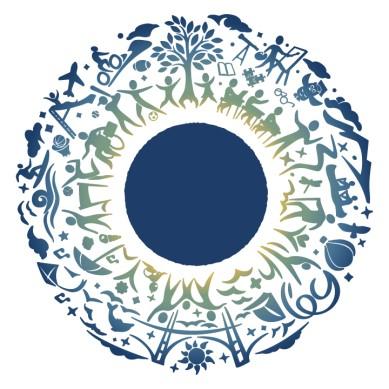

Ask almost any American the first thing that comes to mind regarding glasses and you’ll get a variety of answers ranging from nerd, to smart, to geek, all under the common theme that the media's presentation of people who wear glasses are nerdier than the general populace.
“The very first printed image of somebody wearing a pair of spectacles dates back to 1475, and it's a scholar, or somebody who is educated,” said Neil Handley, the museum curator for the world's oldest optical museum, The British Optical Association Museum at the College of Optometrists in London, and author of the book “Cult Eyewear.”
The original purpose of glasses likely caused the initial association with being smart. That is due to the fact the simplest corrective lenses were those that made it easier to read, meaning that most people who wore glasses were also literate.
Handley, who has been studying the cultural relevance of glasses for over two decades, suggests that popular culture’s representation of glasses and their correlation to intelligence, was done out of a necessity to find a symbol to externally portray an individual's intellect.
“If you wanted to mark out an intellectual in art, the simplest way to depict them was with a pair of glasses, and everybody knew that person was a
person who was bookish, educated, and had lots of knowledge,” Handley said.
Over the centuries, glasses have been portrayed as representations of intellect. In recent pop culture, the media centers around nerds. This idea was especially present in the beginning of film, particularly silent films, where character traits relied heavily on external appearance.
One prominent example of this is Harold Lloyd, a famous silent actor who starred in silent films in the 1910s and 20s. Lloyd’s popularization of a character known as the “Glass” character, sometimes referred to as Harold in many of his films, was one of the first occasions where a character sporting glasses became a well known figure.
“Whereas my character was always the boy with the glasses, and whereas he was always fighting odds, fighting the big fellows, still his attitude of thinking was entirely different from one character role to another,” Lloyd said in an interview in 1966.
The idea of a glasses archetype being an underdog and a bookish character has since stuck around in the popular media in large part due to the portrayal of characters like Lloyd’s “Glass” character.
“The media has been extremely influential, if a stereotype exists, and it might begin in a very small way, and then it gets reinforced by constant repetition, that’s the way that people start to view spectacle wearers,”
Handley said.
Portrayal in media, however, may not be the only culprit behind the stereotypes surrounding glasses continuation. Many studies have actually shown that people with myopia—or nearsightedness—affecting over 40% of Americans, according to the National Eye Institute, may be more intelligent.
The National Library of Medicine conducted a study on the IQ of individuals and found that people within the highest 25th percentile were twice as likely to be myopic as the general population.
A survey conducted between 19992008 with nearly 20,000 respondents by the National Health and Nutrition Examination Survey (NHANES) found that myopia was also associated with higher rates of education. The survey found that only 16.8% of people with less than a ninth grade education had myopia with 23.5% for a ninth through 11th grade level education, 28.6% for having graduated high school, and 45% for those who had graduated college at a time where roughly 40% of the population has myopia.
In order to understand this, it is essential to know whether myopia is developed through environmental factors, or from genetics. The answer to this is both.
According to the National Library of Medicine, “There are well-established links between myopia and urbanization, lack of time outdoors, reduced light
exposure, socio-economic status, prenatal factors, near work, and educational attainment.”
Myopia is oftentimes linked to a higher intelligence in large part due to the idea that children who spend more time indoors reading and looking at screens are more likely to develop myopia and that people predisposed to myopia are more likely to spend time indoors in the first place, according to the National Eye Institute (NEI).
The NEI also voices that because myopia is frequently accompanied by those who spend more time indoors, children with glasses are seen as nerdier throughout their youth and may also have an intelligence boost as result of the additional reading and productive screen usage.
An intelligence boost, however, is not the only stereotype surrounding glasses. Some have come to view wearing glasses as a sign of weakness due to its association with indoor activities, which has influenced many to hide their seeing impairments, such as Ronald Reagan, the 40th president of the United States.
“It suggests physical weakness, it might suggest sexual impotence, Reagan refused to be shown wearing his glasses because he thought it would be a very negative impression and he didn’t want to be seen as weak. So although he did wear glasses, he was taking them off when the film cameras were around,” Handley said.
Cultural views on glasses like this, have in part contributed to a $10 billion-a-year contact lens industry, according to Fortune Business Insights. The idea that contact lenses have been boosted by the negative connotation glasses have has been backed by multiple studies, such as a children's study conducted by the Ohio State University’s College of Optometry. The study found that children who wore contact lenses rather than glasses were more confident in physical appearance, more sure of their athletic abilities, and felt they were more socially accepted.
“I never really liked the glasses that I wore. I always felt embarrassed or bothered by them, which is something I wanted to change going into middle school,” said Enzo Carvalho Goncalves,
a senior and contact wearer at Carlmont. However, as society evolves over time, so may be its view on glasses.

“I feel like people are moving on to wearing glasses, because I see some people wearing glasses, because I see some people wearing fake glasses. So it’s becoming kind of like a fashion accessory now, especially the people wearing non-prescription glasses,” Carvalho Goncalves said.
Handley chalks this shift up to the fashion industry promoting glasses as another accessory.
“Glasses are now seen as something desirable to wear because it allows you to express yourself, you can express your character and your cultural allegiances,” Handley said.
Handley, however, stresses that stereotypes regarding medical devices like glasses shouldn’t have an impact on people who use the device for health benefits.
“We don’t want there to be this prejudice against people who are simply using a device that wants to help them and can be life changing,” Handley said.
Dylan Lobo was five when he got his first comic, an issue of Justice League of America (JLA) from the 90s, from San Francisco Comic Con. His dad, who had brought him to SFCC, was a fan of comics himself and wanted to share his love of comics with his son.
“He actually was the one who gave me Halloween costume ideas as superheroes when I was young. He would always find or show me his old marvel comics to me when I was younger,” Dylan Lobo said.
Nolo Lobo, Dylan’s father, got into comics through his cousin, Dylan’s Uncle Joe. Joe would always bring Nolo along when he went shopping for comics.

“They did a lot of things together, like skating and watching movies. Uncle Joe eventually brought my dad to a pharmacy like an old school drug store, and there was a
plastic rectangle bin of rows of comic books. They would just go through the bin like it was an archive or rows of folders in those office buildings. That was the old way for collecting comics,” Dylan Lobo said.
Dylan Lobo quickly fell in love with the colorful pictures and the exciting action, just like his dad. This led him to start his own collection of comics.
Comic collecting has been a niche hobby since the Silver Age of comics; however, in recent years, it has become far more prominent, with comic book movies and conventions such as Comic Con becoming facets of popular culture.
While most comics aren’t sold for millions of dollars, there is a vibrant market for selling comic books. According to Publisher Weekly, comic sales jumped 62% in 2021, and the industry generated $2 trillion.
However, the cost is not just monetary, as the difficulty of finding comics has also rose.
“Comics used to just be $2-3 an issue. Due to inflation and limited availability to paper issues, comics have skyrocketed to like $5-8," Dylan Lobo said, "Like even that first appearance of Deadpool was at a starting price of $300.”
Variant covers can come at an even higher price due to their rarity, with many starting at $25, a far cry from the $2 they used to be.
For some, collecting comics does boil down to being an investment, something to buy at a certain price and resell when it becomes rare. However, for Lobo, collecting comics comes from an appreciation of the medium.
“I would rather collect just to enjoy the character’s journey and inspiration and even the art and the writing,” Dylan Lobo said.
While the colorful artwork and the exciting stories were appealing to Lobo, what truly drew him into comics was the humanity of the heroes.
“My favorite comic book character when I was young would probably be Spider-Man or Batman. I am surprisingly still a fan of them now since I love street-level
superheroes. They’re human and have personal issues like us. That’s what makes them so lovable,” Dylan Lobo said.
Spider-Man is a great example of comics’ ability to resonate with audiences. Peter Parker is a normal man who juggles multiple heavy situations at once. However, he always gets back up.
The core message at the heart of Spider-Man’s character, “With great power comes great responsibility,” appeals to the potential for good in humanity.

While comics have become more mainstream due to the popularity of comic book movies and video games, some still shun comic books as childish material. However, many believe comics can carry the same thematic weight as any other art form.
Characters like Daredevil and Batman are often used in stories to explore themes of justice, while others like Tony Stark address heavy topics like substance abuse.
“They’re entertaining while also being informative in sciences and philosophical views,” Dylan Lobo said.
Comic books aren’t strictly about superheroes, nor are Marvel and DC the only major comic book publishers. For example, Star Wars has used comics to expand its canon since the original movies. These have attracted many who weren’t interested in comic books to the medium. Ian Lang, a senior at Carlmont, was not a fan of comics, but they found that the Son of Dathomir series was a worthy addition to the Star Wars canon.
“I found it very easy to adjust to comics because a lot of
Richard Rider is a bullied teenager who recieves powers from the dying Nova Prime. Rider used these powers to help alien races and eventually joins the New Warriors and Nova corps.

the things I'm reading, I already know about the lore and what characters are which. Comics are also way easier to digest. There are fewer words, and the pictures really help you get immersed into the universe you're in,” Lang said.
Other cultures have different forms of comics, one of the most famous being Japanese manga. Publisher magazine found that manga is becoming very popular in the United States. Many famous mangas like Death Note and Ghost in the Shell have been adapted into Hollywood movies.
However, many of these adaptations have been criticized as poor representations of the source material. Quinn Mansfield, a senior who recently got into manga through Death Note, believes these stories are hard to adapt due to the differences in Eastern and Western storytelling.
“Techniques differ most from manga to western media by means of pacing and background. A lot of the time, mangas will take a lot of time covering prior events or flashbacks over the course of multiple chapters, whereas western media generally has one constant flowing story,“ Mansfield said.
Choosing which comics to collect can be a daunting task with so many different genres. Dylan’s advice is to choose what comics look appealing to you.
“Collect what you like and collect it if you’re really into it. Don’t buy it mainly because of the fact it’s popular. I continue to collect comic books because of the way the writers and art interest me,” he said.
Whether it’s Miles Morales, Miguel O’Hara, or Peter Porker as Spider-Ham, every SpiderMan shares the trait of resiliency, standing up for good no matter the odds.
After a chemical spill Matt Murdock, a Catholic lawyer, is blinded, but his other senses are heightened. After boxing like his father, he took up the mantle of Daredevil. Much of his story centers around his faith and belief in justice.







*This is a paid advertisement
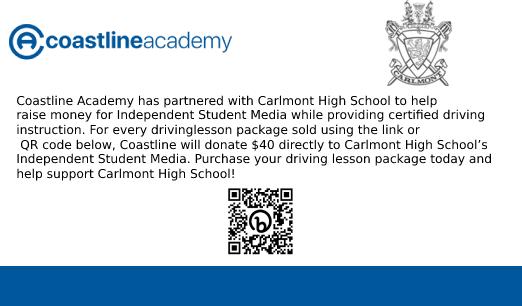




 written
written
 by Annabel Chia and Gabrielle Shore designed by Andrew Shu
by Annabel Chia and Gabrielle Shore designed by Andrew Shu
The nerd. Is it the girl with the thick glasses who spent her Friday night studying? Or perhaps it’s the boy whose nose only leaves his book upon bumping into a locker, the one who sits alone at lunch because he’s too preoccupied to socialize. The nerd is a timeless high school stereotype, one that follows students through the halls; for some, being categorized as this bookish outcast is a nightmare. It’s a label to be avoided at all costs.
But when one mentally removes the rigid box that is the nerd stereotype, two fundamental truths come to light.

First, most people have something they can “nerd out” about, even if it is not one of the preoccupations of the stereotypical nerd. By this definition, almost everyone is a nerd, whether they accept the label or not. Second, being a nerd is not bad; in fact, it has considerable benefits.
Embracing one’s “nerdy” interests opens the door to connecting with a community of people who share these interests, attaining psychological benefits, and forging a fulfilling career out of one’s true passion.

Popular culture depicts the stereotypical nerd is as unsocial. This perception is consistent with the Oxford Dictionary’s definition of “nerd,” which notes that a nerd “lacks social skills.”
Whether it stems from this lack of social skills, being so hyper-fixated on a single topic that they don’t have the time for social interaction, or simply a distaste for camaraderie, this stereotypical characteristic contributes to the false perception that being a nerd guarantees isolation. However, many who embrace their “nerdy” interests suggest the contrary.
Take Tomoki Urata, for instance: a high school junior interested in video games, Urata is the president of the Super Smash Bros. Club at Carlmont. Devoting one’s time to video games might be perceived as stereotypically nerdy, but Urata defies the perception that nerds are unsocial by turning this interest into an opportunity to make friends.
“I definitely see video games as a good opportunity to bond with people. It makes it easier to socialize because it gives you an opening; you can just be like: ‘Do you want to play Smash?’ and then if they say yes, then it becomes easier to talk to them,” Urata said. “Outside of that community, you don't really bring it up in conversation.”
Urata’s description of this scenario in which someone uses a common interest as an ice-breaker plays out in social interactions every day, but he added that there is often an aura of stigma surrounding a conversation when it concerns a stereotypically nerdy topic.
This stigma stems from the nerd stereotype perpetuated by the media through movies, television shows, books, and advertisements, which indicate that nerds are unsocial and should be looked down upon. The media cultivates a fear of being slapped with the label or merely associated with the concept.
However, once it is accepted that everyone has something that they “nerd out” about, many light bulbs of curiosity flicker on, and doors to new connections open.
Georgie Rauls, a Carlmont senior and the president of the robotics club, found these opportunities by embracing her stereotypically nerdy interest.
“I think tapping into your nerdy side is good because you get to really dive deep into what you're interested in. Part of nerd culture is community, and when you're surrounded by people with similar interests, then you actually get to learn a lot more about your subject,” Rauls said.
Rauls found that the community she forged by embracing her nerdy
side helped her reach a new level of understanding of robotics, one that she could not have obtained without rising above the stereotype and making meaningful connections. Most often, these connections were with people Rauls wouldn’t otherwise see herself becoming friends with.
“The regular group of people I hang out with isn’t very techy or stereotypically nerdy, so being in robotics gave me a place where there were people with shared interests who I wouldn't usually talk to,” Rauls said.
In forming these unlikely connections, Rauls found that the stereotypical nerd community is diversifying and dismantling the stereotype.
“In pop culture, nerds are usually very socially awkward guys with acne that don't get out of the rooms, but in modern society, the image of a nerd is diversifying with more women in STEM, more minorities in STEM, and hopefully the idea of a nerd when it comes to mind is becoming more diverse in general,” Rauls said.
Urata and Rauls agree that nerd culture, while timeless in its stereotype, is evolving in its implications. As the label zooms out to apply to more diverse backgrounds and interests, as described by Rauls, finding community by embracing one’s “nerdy interests” becomes an easier way to meet people.

There are also benefits of embracing one “inner nerd” that extends beyond physical connections. According to Aaron Fisher, a psychology professor at the University of California, Berkeley, immersing oneself in a passion is important for mental health by sending positive signals to the brain, and overall improving one’s mood.
“A benefit of engaging with passions is meaning-making. You're not punching the clock and just putting money in the bank for paying your bills. Instead, if you're true to that passion, it can help you feel like your life has meaning,” Fisher said.
This theory is connected to Maslow’s hierarchy of needs, in which individuals can progress up a pyramid of basic human needs to achieve the optimal level of life: self-actualization.


According to Saul McLeod’s article published in Simple Psychology, moving up the pyramid requires a person to fulfill the preceding level, starting with physical needs, security, love and belonging, esteem, and finally, self-actualization.
the level of esteem with tangible accomplishments, as Fisher observed with Berkeley students, but they will stay stagnant at that level.
in an article published in Psychology Today, today’s society of hustle culture, in which work is glorified and thus produces a toxic mindset of productivity, has discouraged many people from continuing up the pyramid and tapping into their nerdy side to reach self-actualization.
Hustle culture encourages people to constantly grind to reach their professional goals, with no room for breaks or hobbies, because the full dedication of time seems vital in the never-ending chase of a higher salary.
According to Fisher, people might feel accomplished if they achieve a certain level of prestige in their workplace, or if they make a six-figure salary, but selfactualization can’t be achieved without a passion; unless one’s work is their true passion, the neglection of “nerding out” about anything will eventually damage one’s mental health and lead to burnout.


“Just like when you start a fire off
some relaxation, some self-indulgence, and psychologically, that's incredibly protective.”
This same theory can be applied to high school students who may abandon interests for the sake of grades or college admissions.
“It’s detrimental to abandon your passion or hobbies and interests to get into Berkeley or Stanford, or after to get that great job and earn that money and get that promotion,” Fisher said. “Holding onto passions and keeping a place for them in your life can be very rewarding.”
In addition to ascending the hierarchy of needs, another psychological benefit that comes hand in hand with the pursuit of passions is gaining positive neural feedback.
“Findings actually support that our brain offers rewards when we’re learning something new or pursuing something we’re interested in,” said Chujun Lin, a postdoctorate at the
According to Lin, consistent positive neural feedback occurs if there’s a constant engagement with a passion, which contributes to an overall more
"Holding onto passions and keeping a place for them in your life can be very rewarding."
- Aaron Fisher
The museum is run today by people who genuinely are interested in model trains. The manager, Patrick Benz, decided in his 50s that instead of keeping his passion for model trains as a side hobby, he’d make it into his fulltime job.
“I had many different careers over the years; I worked for a pet company, then a retail bank company, and was having a hard time in my position for a number of reasons. My manager made the comment that you should follow your passion,” Benz said. “Well, my passion has always been model trains.”


end up realizing ‘I don't enjoy doing this.’”
Although Northlandz displays the instance in which someone focuses solely on their passions as a career, it’s a privileged path since many need to work and their passions don’t provide them with that option.





However, Fisher uses his personal experiences to emphasize that it doesn’t have to be all or nothing. It’s still a positive habit to have a balanced lifestyle between work and hobbies, just as he balances his side hobby and profession.
Either path works, and it’s all about a person’s individual lifestyle. No matter what their lifestyle is, though, it’s a great idea to keep the nerdy side of themselves close.

By experiencing the quirks of nerd culture, communities can be built, people can achieve a sense of purpose, and satisfaction can be brought into one’s lifestyle.
“Don't be afraid to experience nerd culture. Don't be afraid to experience in general,” Benz said. “Especially model trains.”
"Don't beafraidtoexperiencenerd culture. Don'tbeafraidtoexperiencein general."
-PatrickBenz

Jocks, cheerleaders, and nerds — we’ve heard it all. According to many movie depictions, high school is divided by popularity, and if people aren’t popular, their experience will suck. Walking through Carlmont during the lunch period will show anyone just the opposite.
One of the most known examples of this phenomenon is “High School Musical.” Throughout this movie series, the plot revolves around the star basketball player, Troy Bolton, who cannot join the school play due to his status as a jock. There is even a song about sticking to the “status quo,” essentially staying in the clique one belongs to.
The lyrics in the song repeat the words “stick to the stuff you know,” implying that high school is not a place to branch out or go outside of stereotypes. Although the message of the movie results in Troy finding his passion, the induction of these stereotypes is not only wrong but also harmful.
The issue with children seeing these movies is that people are most impressionable from birth to adolescence. The academic journal “Social Science & Medicine” found that children were most susceptible to impressions by parents and other sources. They absorb the information from films such as “High School Musical” and carry those expectations up until their high school years which can cause fear and anxiety regarding the subject of school.
In a University of Pennsylvania paper called Magic at the Movies, Linda Jones Rufer, M.D., F.A.A.P.,

states that movies are presented as educational, meaning children have something to take away from what they are watching. In addition, Rufer provides that movies allow children to step into the character’s shoes, feeling empathy and the emotions of those on-screen. Feeling that anxiety of facing high school could create future anxiety in regards to their future in high school.
Take the phrase “nerd culture,” for example. The first thing that comes to mind for many is likely what most cliche movies would classify as a nerd; glasses, books, and good grades. I think of a nerd as anyone with a passion for a specific topic, but that is

not because of stereotypes.
Stepping out of the media and looking at Carlmont specifically, one will hardly ever find all the football players in one place, except at practices and team events, and the same goes for cheerleaders, gamers, Associated Student Body (ASB) members, and any other groups portrayed as cliques in the media. School is a melting pot of different groups, interests, and sports. So why does the media portray this so poorly?
The answer is money. A movie or book where a character enters high school and struggles with cliques always sells. Taking “High School Musical,” for example, the estimated domestic video sales were 131 million dollars. “Mean Girls” is another example of this phenomenon, making 130 million dollars at the box office in total, and 24 million on its opening weekend, according to The
Numbers, a website that tracks movie sales.
That said, there needs to be a change to the production of these books and movies. Considering the influence these stereotypes have on young minds, the concept of the high school experience must be accurate in order to adequately prepare young readers and watchers for the environment they will eventually step into.
In order to make this shift, starting with movies, there should no longer be a portrayal of characters as outsiders and weird kids. Additionally, the main characters’ journeys and lessons should not require an encounter with made-up cliques, as it strips the movie of its reality and credibility.
Finally, with books, we need to focus on putting a positive twist on the subject of high school. Instead of preparing young minds for the worst possible scenarios, the media should begin to embrace uniqueness and inclusion.
There are many stories to tell, and we have focused on one for far too long.
Art by Catherine EikelbarnerOver the past decade, college counselors have become increasingly popular, marketing themselves as the gateway into top college acceptances.
However they are causing more harm than good when considering the ticket price.
At the whopping average cost of $400 an hour, as found by The Atlantic, private Bay Area college counseling has emerged as a moneygrabbing business.
One complaint about college counselors concerns that they are getting paid to interfere with the student’s writing voice. As one would expect, each counselor has their individual take on the best writing structure and style.
In my friend’s experience, their private college counselors’ writing tone does not align with their organic approach. Consequently, many of their essays exclude the original language and flair, often blurring the applicant’s personality from their final piece.
Universities stress the importance of original writing because they want a clear understanding of applicants’ personalities to gauge how well they would fit in the new environment.
College admission counselors, such as Tulane University admissions representative Jonathan Gutmann, have voiced frustration on this issue. “Parents, this is your child’s process, not yours, not a counselor’s, your child’s,” Gutmann said.
This lucrative industry also poses mental health consequences, as Sam Stabinsky, a senior at Carlmont High
School, voices complaints regarding the additional and unnecessary stress imposed by college counselors.
“Writing with her was difficult. I wasn’t writing for myself anymore, I was writing for what I thought would satisfy her – although I always seemed to fall short,” Stabinsky said.
While removing all outside assistance during the admissions process may not be best, there are better options.
There are a series of free online resources available to all Carlmont students that provide extra support in areas such as grammar, writing, and overall admissions aid.
Carlmont set up Paper accounts for all its students to serve as a tutoring resource with a complementary writing assistant. The site includes a college admission feature equipped with grammar, spelling, word choice, flow, and structure assistance. Since the
feedback is delivered electronically rather than directly to a student’s face, there is less pressure to accept changes that do not align with the writer’s tone.

For those in need of assistance with the overall application process, including navigating sites, understanding majors, and learning how to market yourself, resources such as UStrive are free and accessible nationwide. The program connects each user with an experienced adult who has studied the college application process and thus can serve as a mentor and advisor for those who take advantage.
With the abundance of free resources to relieve high school seniors through this demanding process, it is unnecessary to allocate funds to individuals who remove authenticity from students’ profiles.
Carolina Cuadros
As someome who has taken several Advanced Placement (AP) classes at Carlmont, I have gotten this impression from multiple AP teachers: getting a good score on the AP exam is the overall goal for their course, and engaging with the material is secondary.
John Tierney, a former high school teacher and college professor, said in The Atlantic, “AP courses are a forced march through a preordained subject, leaving no time for a high-school teacher to take her or his students down some path of mutual interest.”
This focus on textbook-based teaching can also have negative effects.
According to the National Education Association, the practice of simply reading a textbook, taking notes, and answering questions can be a great way to learn for many students. However, students who respond well to this type of learning, and those who do not, require some form of variety in classes. Many AP classes, especially AP history classes, which are some of the most frequently taken according to College Board, follow the same formula of lectures, notes, and essays in class with textbook reading with additional notes and comprehension questions for homework.
On the contrary, in my experience taking college prep or non-honors and non-AP classes, the content
centers around students learning both the material of the class and learning techniques. I have been in AP classes where discussions have been flowing and project groups have been jelling. These discussions and projects have had to stop short due to the much more rigidly scheduled AP curriculum that stresses getting to the end of the textbook to have the best chance to pass the AP test.
“I’ve taken some AP classes and some regular classes, and I really enjoy the way regular classes allow way more artistic and creative learning than AP classes,” said Sammy Kosman, a senior at Carlmont.
According to the University of Wisconsin academic journal, “The Journal of Human Resources,” for students such as myself, the pressure to take AP classes can further the negative side of taking APs.
The Bay is among the most educationally competitive areas in the world. Many students feel that AP classes are one of the few ways that we can set ourselves apart from other students in college.
Nationwide, there is a college enrollment of around 40%, according to the National Center for Education Statistics. In the San Francisco Bay Area, that number more than doubles in certain school districts; Sequoia Union High School District (SUHSD), has a college enrollment rate of 79.8%, according to the California Department of Education.
This results in higher levels of academic competition among peers in the Bay versus in less academically inclined areas such as Willits Unified school district in Mendocino County, with a less-than-average college enrollment rate of 27.8%, according to the California Department of Education.
Having grown up in the Bay Area, I have lived constantly surrounded by huge tech companies, innovators, entrepreneurs, and other students with competing goals. Therefore I feel a more intense pressure than most Americans to do well in school. As a result, students such as myself turn to increased sports, extracurricular activities, and AP classes to set ourselves apart from the competition and help them get into the college of their dreams, according to Flex College Prep.
As a result, both local and nationwide students feel pressure to take AP classes that add another level of stress to their schedules, according to the University of Wwisconsin.
Despite offering opportunities for students to take more challenging classes and earn extra Grade Point Average (GPA) points, AP classes contribute contributing to a lack of passion in school and suppression of creative learning techniques that are detrimental to student interest and mental health in schools.
Emma Yin
Anime is hand-drawn and computergenerated animation originally from Japan. It is characterized by colorful graphics in fantastic or futuristic-themed plots.


Death Note (2006-2007):
This won Best TV Anime at the 2007 Tokyo International Anime Fair and the Best New Talent Winner Yokohama Film Festival award in 2007. In 2017, it gained a Netflix remake.
Astro Boy (1963-1966):
According to IGN Entertainment, Astro Boy is arguably the most popular anime of the 1960s, vital in developing the manga and anime industry; it was highly praised and inspired influential anime and manga creators, such as


This was the first anime title to be featured on USA Today’s Top 150 in 2004. Naruto is the most popular anime in over 93 countries according to Google search data, and influenced other popular anime, like Hunter x Hunter, according to CBR.com (Comic Book Resources).

Hunter x Hunter (1999-2001):

This had a new anime adaptation announced in July 2011, which received more viewers than the original, according to Movie News Guide and Latin Post. The 2011 adaption is listed as the top anime of 2010 by Polygon, Crunchyroll, and IGN.
Inuyasha (2000-2004):

This ranked third in the category of Best Anime in 2003 in the Anime Grand Prix polls by Animage and won the Property of the Year award in Internal Correspondence version 2 trade magazine (ICv2) in 2004 and 2005.
Demonslayer (2016-2020):


Demonslayer got particularly popular when its new anime adaptation aired in 2019. It was named the most satisfying anime of 2019 in Otakuusa Magazine and won the 2019 IGN Summer Movie Awards and the IGN People’s Choice Award.

Jujutsu Kaisen (2018-present):
Jujutsu Kaisen won Anime of the Year at Crunchyroll Anime Awards and the Young Entertainer Awards in 2020, and was the most-watched anime series on Crunchyroll in 2020.


Spy x Family (2022-present):
Spy x Family is ranked as one of the best breakout shows of 2022 according to CBR, ranking first out of the Top 10 Spring 2022 Anime Ranking by Filmarks. According to Video Research Ltd, Spy X Family’s premiere week was the most-watched anime broadcast with about 6.92 million viewers.


Music, regardless of the genre, benefits people in a variety of ways, from reducing their stress to comforting them through difficult times.



Classical music helps with relaxation, concentration, memory, and blood pressure reduction. A clinical trial done by Sky Chafin in the British Journal of Health Psychology showed that, compared to people who

listened to pop music, people who listened to classical music after a mentally straining activity had significantly lower blood pressure afterward.




Heavy metal music increases a person’s satisfaction with their sense of self. According to a survey in the book “Self and Identity,” people who listened to heavy metal music were significantly happier in their youth because of the community they found from listening to that genre of music. These people had an easier time adjusting to adulthood because of their strong sense of community.
Research shows that listening to pop music can help to increase your endurance and performance during a workout. A study in the International Journal of Scientific and Research






Publications showed that pop music boosted people’s moods and made them happier.
Rap music can benefit people’s brains because it can help them cope with mental health issues. Research at Cambridge University found that listening to rap music can trigger parts of the brain that control emotion, motor function, nerve functions, language, and motivation.
Listening to jazz music is relaxing as it induces an alpha-wave state in your brain. This brain wave state falls in the middle of the brain wave section; it means your brain is relaxed, calm, and isn’t focusing too hard on anything.


“The Bell Jar” by Sylvia Plath details the life of a girl who dreams of being a poet as she struggles with identity and societal norms.

“Love Story” by Erich Segal tells the short love-at-first-sight story of a wealthy Harvard student and a middle-class Radcliffe girl.

“1984” by George Orwell tells the story of a man who loses his identity while working under a repressive regime.
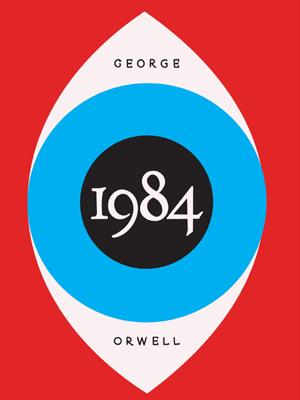
“The Book Thief” by Markus Zusak tells the story of an orphan adopted in a German family, becoming friends with a Jewish boy during Nazi invasions.
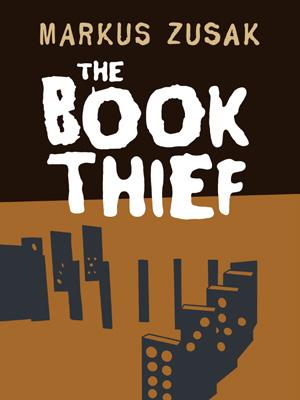
“Pride and Prejudice” by Jane Austen recounts the story of five daughters as they go on a journey to find romantic partners.
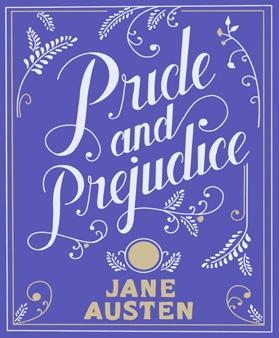
“The Secret History” by Donna Tartt is a detective story told by a student in a secretive Ancient Greek and Latin classical university program.

Erik Cheng, Staff Writer
A local non-profit organization, Each Green Corner, educates the community on hunger through gardening and volunteer work.
Anuja Kamatkar & Allie Tremulis, Staff Writer
Carlmont Choir worked together to create a memorable performance despite challenges regarding the absence of their choir director, Genevieve Tep.
Zara Hai & Jackson Sneeringer, Staff Writer
Newly excavated Egyptian artifacts made their debut at the “Ramses the Great and the Gold of the Pharaohs” exhibit at San Francisco’s de Young Museum.
Robin Linares, Staff Writer

Jennifer Lang took on the position of instructional vice principal (IVP) following Gay Buckland-Murray‘s promotion to principal.
Use the QR codes to read more about these stories and make sure to check out more news on scotscoop.com!



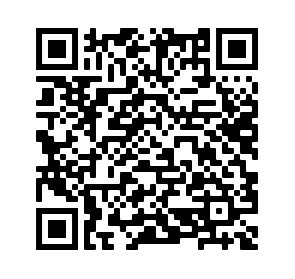

Telephone: 650-595-0210
Address: Carlmont High School 1400 Alameda de las Puglas Belmont, CA 94002

